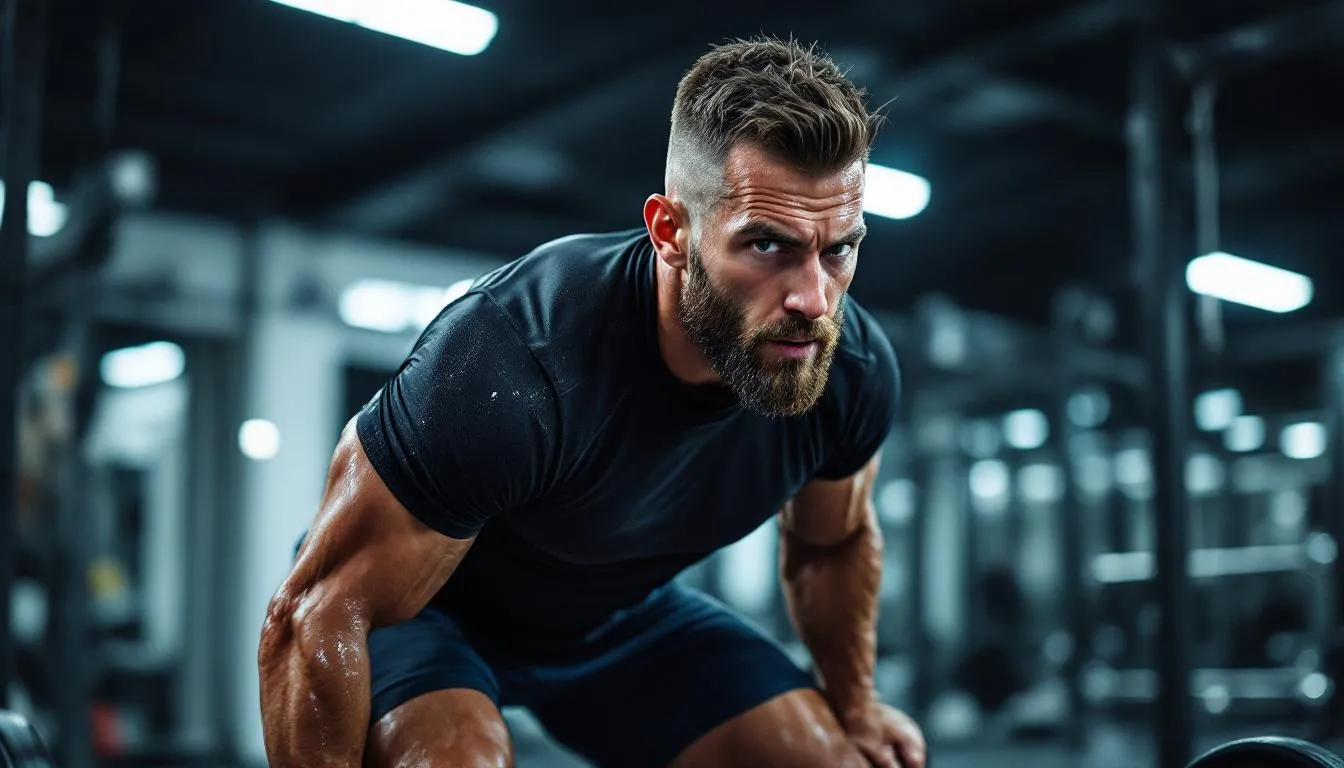Why Do I Sweat So Much When Working Out? Insights and Practical Solutions for Excessive Sweating During Workouts
Excessive sweating during workouts is something I’ve encountered frequently as a trainer. Over the years, I’ve developed a deeper understanding of why this happens and learned practical ways to help my clients manage it. Sweating, also known as perspiration, is a natural cooling mechanism, but for some, it can become excessive, affecting their comfort, confidence, and even performance. Here’s what I’ve learned and how I address it.

Understanding Excessive Sweating
Recognizing Hyperhidrosis
- What It Is: Some clients experience overactive sweat glands, a condition called hyperhidrosis, which can be classified as primary hyperhidrosis—excessive sweating in specific areas like the palms, feet, underarms, or scalp without an underlying medical condition—or secondary hyperhidrosis, which is due to another medical issue such as menopause, thyroid problems, or medication effects.
- Common Areas: Palms, feet, underarms, and other localized areas are often affected. This condition affects daily activities and social interactions, such as shaking hands.
- Why It Matters: Severe cases can lead to dehydration or heat-related emergencies if unmanaged during intense exercise.
Hyperhidrosis is diagnosed by a healthcare provider, often through a review of medical history and evaluation of sweating patterns to determine the type and possible underlying causes.
Why We Sweat
- Cooling the Body: Sweat is the body’s way of regulating temperature, especially during physical activity.
- Triggers: Factors like fitness level, body size, workout intensity, spicy foods, and certain medical conditions can amplify sweating. How much sweat you produce depends on exercise intensity, environment, and other factors such as hydration, health conditions, and genetics.
Factors That Influence Sweating
- Body Size and Muscle Mass: Larger individuals and those with more muscle mass tend to sweat more due to greater heat production.
- Fitness Levels: Beginners often sweat more as their bodies adapt to exercise, while fit individuals sweat earlier and more efficiently.
- Genetics: Family history plays a role in excessive sweating patterns. Certain health conditions and medical conditions, such as hyperhidrosis, thyroid disorders, or diabetes, can also cause people to sweat a lot or sweat heavily, even during mild activity.
- Age: Older adults may sweat more because their bodies are less efficient at regulating temperature.
- Diet and Medications: Spicy foods, caffeine, and certain medications can increase sweating.
Excessive perspiration can sometimes be linked to body odor, especially if not managed properly.
Extreme sweating can increase the risk of dehydration and may require medical attention.

Hydration: The Key to Managing Sweat
- Importance: Staying hydrated helps regulate body temperature and sweat levels.
- Electrolyte Balance: Sweat contains sodium and other electrolytes, so I recommend replenishing these with water, sports drinks, or electrolyte supplements.
- Dehydration Risks: Without proper hydration, excessive sweating can lead to dizziness, fatigue, or heatstroke. Exercising in high temperatures increases the risk of dehydration and heat-related illnesses. In severe cases, heatstroke can become life threatening if not treated promptly.
Managing Sweating in Different Environments
Sweating isn’t just about how hard you work out—it’s also about where you work out. Different environments can have a big impact on how much you sweat and how your sweat glands respond. In hot weather, your body stimulates sweat glands to produce more sweat in an effort to cool down and regulate your body temperature. This can lead to excessive sweating, especially during intense physical activity or if you have a larger body size or higher fitness levels.
To manage sweating in hot conditions, it’s crucial to stay hydrated by drinking plenty of water before, during, and after exercise. Wearing lightweight, breathable clothing made from moisture-wicking fabrics helps keep you cool and allows sweat to evaporate more efficiently. Avoiding spicy foods and caffeine before workouts can also help reduce sweating, as these can trigger your sweat glands to produce more sweat.
In colder environments, you might still sweat during physical activity, but the sweat may not evaporate as quickly, leaving you feeling clammy or chilled. Using antiperspirants or even prescription-strength antiperspirants can help reduce sweating in these situations. It’s also important to consider your individual factors—such as your body size, fitness levels, and medical history—when developing a plan to manage sweating. By understanding how your body responds to different environments, you can tailor your approach to stay comfortable and cool, no matter where you exercise.

Preventing Sweating: Proactive Strategies
If you want to reduce sweating before it becomes a problem, a proactive approach is key. Maintaining a healthy weight can help, since carrying excess body fat means your body produces more heat, which in turn activates your sweat glands and leads to more sweating. Regular exercise not only improves your overall health but can also help your body become more efficient at cooling itself, which may reduce sweating over time.
Choosing the right clothing is another simple but effective strategy. Natural fibers like cotton allow your skin to breathe and help keep you cool, while synthetic materials can trap heat and moisture, leading to more sweat. Applying antiperspirants—especially those with ingredients like aluminum chloride or aluminum zirconium—can block sweat glands and reduce sweat production. For those who experience excessive sweating or have hyperhidrosis, medical options such as botulinum toxin injections (commonly known as Botox) or prescription medications like glycopyrrolate can provide significant relief.
Managing stress and anxiety is also important, as emotional triggers can cause your body to sweat excessively. Techniques like meditation, deep breathing, or yoga can help keep your mind and body calm, reducing the likelihood of sweating excessively. By incorporating these proactive strategies into your daily routine, you can help reduce sweating, stay cool, and feel more confident during any activity.
My Practical Solutions for Clients
-
Clothing Choices
Wear breathable, moisture-wicking fabrics to stay cool and dry.
Avoid heavy, non-breathable materials during workouts.
-
Antiperspirants and Deodorants
Use strong antiperspirants (sometimes prescription-strength) to reduce sweat production. Prescription antiperspirants are available and can be discussed with your healthcare provider for more effective management.
Deodorants help control odor but won’t reduce sweating.
-
Diet Adjustments
Avoid spicy foods, caffeine, or alcohol before workouts, as these can trigger sweating.
-
Cool Down Strategies
Use fans, cold towels, or air-conditioned spaces during workouts.
Take breaks to prevent overheating.
-
Relaxation Techniques
Stress can trigger sweating, so I include breathing exercises and meditation in client routines.
-
Medical Treatments
For severe cases, I recommend consulting a dermatologist or healthcare provider.
Treatments like botox injections, iontophoresis, or prescription medications can be effective. Botox injections work by using botulinum toxin to inhibit nerve signals to sweat glands, reducing perspiration, but they are not a permanent solution and require repeat treatments. It’s important to note that some treatments may not provide a permanent solution, so discussing your needs with a medical professional is essential.
Consult a dermatologist to explore all available treatment options for excessive sweating.
Collaborating with Healthcare Providers
For clients with conditions like hyperhidrosis or excessive sweating tied to medical issues (e.g., thyroid problems, diabetes, or secondary hyperhidrosis—a form of excessive sweating caused by underlying health conditions), I work closely with healthcare professionals to create a comprehensive plan. This ensures my clients can safely pursue their fitness goals while managing their symptoms.
Supporting Mental Health
Excessive sweating can affect confidence and lead to social anxiety, especially in group fitness settings. I encourage:
Mental Health Support: Counseling can help clients cope with self-consciousness or anxiety.
Empowerment: I remind clients that sweating is natural and not a sign of weakness. Seeking help shows strength and dedication to their health.
Conclusion
Through years of experience, I’ve learned that excessive sweating is more common than most people think. By understanding its causes and taking proactive steps, clients can manage their symptoms, feel confident, and enjoy their workouts. Whether through hydration, lifestyle changes, or medical interventions, there are effective solutions that can transform how they feel and perform.
With the right support, excessive sweating doesn’t have to hold anyone back from achieving their fitness goals.














